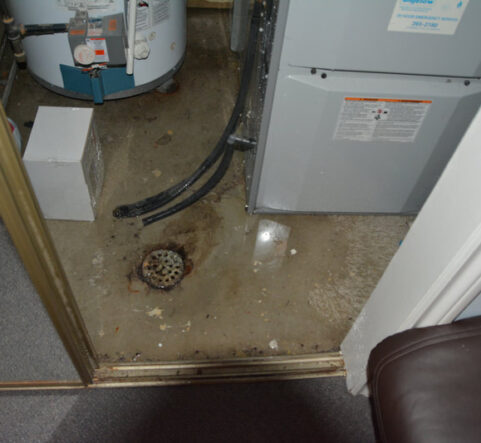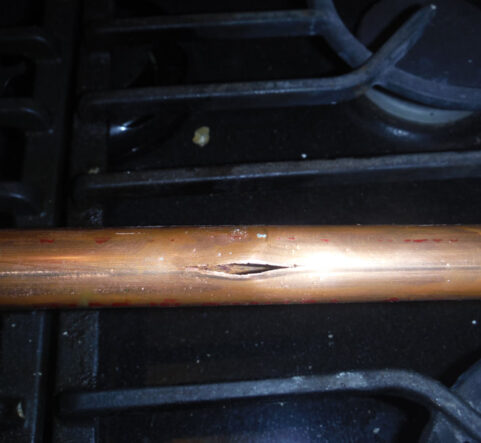Water emergencies can strike without warning. A burst pipe, a major leak, or an overflowing appliance can cause thousands of dollars in damage within minutes. Knowing how to quickly shut off your home’s water supply is one of the most valuable skills every homeowner should master. This guide will walk you through the process step-by-step, helping you prevent extensive water damage when every second counts.
Why Quick Action Matters
Water damage spreads rapidly through your home, seeping into floors, walls, furniture, and personal belongings. According to insurance industry data, water damage is one of the most common and costly homeowner claims. The faster you can stop the flow of water, the more damage you can prevent and the lower your repair costs will be.

Before an Emergency: Know Your System
The key to handling a water emergency effectively is preparation. Take time now, when you’re not under pressure, to locate and familiarize yourself with your home’s water shutoff points.
Main Water Shutoff Valve
Your home’s main water shutoff valve controls all water flowing into your property. This valve is typically located in one of several places:
At the street: Look for a covered box or pit near the curb, usually between your home and the street. This may require a water meter key or wrench to operate.
Where the main water line enters your home: Check your basement, crawl space, or utility room where the main water pipe comes through the foundation.
Near your water heater: In some homes, especially those built on slabs, the main shutoff is located close to the water heater.
Outside an exterior wall: Look for the valve on an outside wall, particularly in warmer climates where pipes don’t need to be protected from freezing.
Individual Fixture Shutoffs
Most water-using appliances and fixtures have their own shutoff valves. These are useful for isolated problems and include:
- Toilet: Look behind the toilet near the floor
- Sinks: Check under the sink for valves on the supply lines
- Washing machine: Usually behind or beside the machine
- Dishwasher: Often under the kitchen sink
- Water heater: Typically on the cold water inlet pipe
Step-by-Step Emergency Shutoff Process
Step 1: Stay Calm and Assess the Situation
Take a deep breath and quickly assess where the water is coming from. If it’s a localized issue like a toilet overflow or sink leak, you may only need to shut off water to that specific fixture. For major leaks, burst pipes, or when you’re unsure of the source, proceed to shut off the main supply.
Step 2: Turn Off Electricity if Necessary
If water is near electrical outlets, appliances, or your home’s electrical panel, turn off electricity to the affected area at your circuit breaker before proceeding. Water and electricity are a dangerous combination.
Step 3: Locate Your Main Shutoff Valve
Head to the main water shutoff valve you identified during your preparation. If you haven’t located it yet, check the locations mentioned above, starting with where the main line enters your home.
Step 4: Turn Off the Main Water Supply
The method for shutting off your main valve depends on the type of valve you have:
Ball valve: These have a lever handle. Turn the lever 90 degrees (a quarter turn) so it’s perpendicular to the pipe. When the handle is across the pipe, the water is off.
Gate valve: These have a wheel-like handle that you turn clockwise (righty-tighty) until it stops. It may take several full turns to completely close.
If the valve is stuck: Don’t force it, as you could break the valve and create a bigger problem. Try using penetrating oil and gentle pressure, or call a plumber immediately.
Step 5: Turn Off Your Water Heater
After shutting off the main water supply, turn off your water heater to prevent damage from running without water. For gas units, turn the gas control to “pilot” or “off.” For electric units, turn off the circuit breaker.
Step 6: Drain the System
Open faucets throughout your home, starting with the highest fixtures and working down to the lowest. This will drain remaining water from the pipes and reduce pressure in the system. Don’t forget outdoor spigots if it’s not freezing weather.
Step 7: Document and Begin Cleanup
Once the water flow is stopped, take photos of any damage for insurance purposes, then begin removing standing water and drying affected areas as quickly as possible.
Special Considerations
Frozen Pipes
If you suspect frozen pipes caused the emergency, don’t attempt to thaw them quickly with heat guns or torches. This can cause pipes to burst. Instead, shut off the water, apply gentle heat like a hair dryer, and call a professional.

Old or Corroded Valves
If your shutoff valves are old, corroded, or haven’t been used in years, they may not turn easily or may not shut off completely. Have them inspected and replaced by a plumber during routine maintenance.
Apartment and Condo Living
If you live in an apartment or condo, locate both your unit’s individual shutoff (if available) and know how to contact building management or maintenance for the main building shutoff.
After the Emergency
Once you’ve shut off the water and addressed the immediate crisis, take these steps:
Contact a licensed plumber to assess and repair the damage. Don’t attempt major plumbing repairs yourself unless you’re qualified, as improper repairs can lead to bigger problems.
Call your insurance company to report the damage and begin the claims process. The sooner you report it, the faster you can begin repairs.
Continue the drying process using fans, dehumidifiers, and proper ventilation to prevent mold growth.
Prevention and Maintenance Tips
Regular maintenance can help prevent water emergencies:
- Exercise your shutoff valves annually by turning them off and on to keep them working smoothly
- Insulate pipes in unheated areas to prevent freezing
- Replace old, corroded supply lines and valves before they fail
- Install water leak detectors near appliances and in basements
- Know the location of shutoffs for all family members and house sitters
Final Thoughts
Water emergencies are stressful, but knowing how to quickly shut off your home’s water supply can save you thousands of dollars in damage and countless hours of cleanup. Take time today to locate your shutoff valves, test them to ensure they work, and share this information with all adults in your household.
Remember, when in doubt, it’s better to shut off the main water supply and call a professional than to let water continue flowing and causing damage. A few minutes of preparation now can prevent a minor leak from becoming a major disaster.
Keep this guide handy, consider laminating a quick reference card with your shutoff locations, and make sure everyone in your family knows where to find it. Your future self will thank you when faced with a water emergency.
Need A Restoration Company in the Toronto Area?
Call 416 Restoration
1-416-400-5632
416 Restoration Gallery